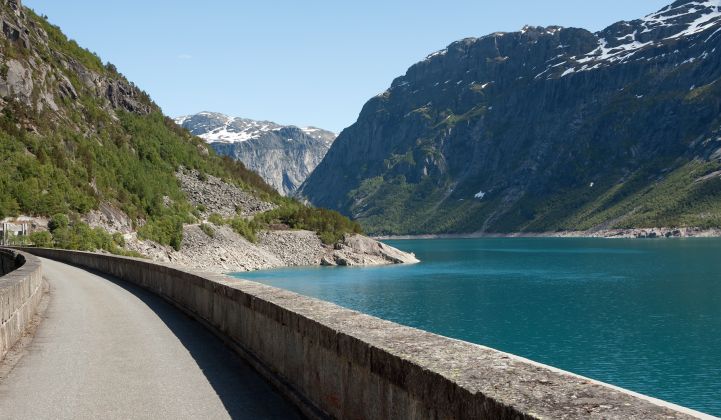Norwegian academics have countered research by Dr. Björn Peters, reported in GTM, that claimed Norway’s pumped hydro capacity could not serve as a "European battery."
“Norway can become a substantial part of Europe’s energy pack, given political will and action,” said Kaspar Vereide, adjunct associate professor at the Department of Civil and Environmental Engineering of the Norwegian University of Science and Technology (NTNU).
Vereide and four other academics claimed that “several arguments and facts presented are inaccurate” in a GTM article about Dr. Peters' claims about the availability of Norway’s hydro capacity for other European nations.
A written response to the article was also signed by two other NTNU professors, Magnus Korpås and Ånund Killingtveit, and two senior researchers at the independent research body SINTEF Energy Research, Atle Harby and Tor Haakon Bakken.
“One of the main problems is that the article discusses all the aspects of storage in terms of energy,” said the researchers. “This is a classic mistake, as the annual energy production in a country may be perfectly satisfactory, but it is the demand and production of power that needs to be balanced.”
Whereas Dr. Peters claimed nearly all of Norway’s 82 terawatt-hours of storage was used by Norwegians, the Norwegian team said that balancing European wind and solar power would require weekly storage irrelevant to the seasonal or annual needs of the country.
It is possible to cover these different needs for storage using the same reservoir capacity, with limited conflict of interest, the Norwegian team maintained.
Furthermore, Vereide and his colleagues observed, the largest need for wind power balancing is during the winter months, when Norway’s hydropower reservoirs will always be drawn down far below their maximum levels, with plenty of free storage capacity.
In the summer months, with high volumes of solar power generation, the need for balancing is mostly from day to night, and the volume needed for energy storage is much less, they said.
Furthermore, Norway’s reservoirs will usually be filled up to near full capacity before winter sets in. And if new pumped hydro storage plants are built, there would not be a need to fill the reservoirs even then.
“The need for seasonal storage in Norway is not expected to be higher, mainly owing to construction of wind power [facilities] that have the highest production during winter,” said the Norwegian team.
The researchers disagree with Peters’ belief that Norway’s growing vehicle electrification program would drain the energy system, and that the country does not have enough pumped hydro capacity to fill reservoirs on demand.
Quoting figures from the Norwegian Energy and Water Directorate, the five academics said that if all passenger cars in Norway were substituted with electrical cars, the resulting increase of energy consumption would be about 8 terawatt-hours a year.
This is only equivalent to 6 percent of the average annual electricity production in the country, “and will thus not have a major impact on the energy balance,” they said.
On pumped hydro, the five agreed that Norway lacks policy supports, but said “this is because there has not been much need for them until now.”
The 12 pumped storage plants in Norway today were designed to store water during spring and summer for use during the winter, they said, but more than 20 gigawatts of extra capacity could easily be built using existing reservoirs.
Because they would not need new reservoirs, these plants would likely not face local opposition and would have much lower costs and environmental impacts than building new pumped storage projects in other European countries, the researchers said.
The agreed with Peters on one thing, though. Neither party sees much political support for exporting energy to countries such as Germany.
“There is need for political will and action if large-scale application of existing Norwegian storage capacity is to be realized,” admitted Vereide and his colleagues.
Peters said that the Norwegian team made many valid points. “I agree that a reconstruction of the Norwegian storage lakes is possible, but the authors may underestimate the huge challenge to do the transformation,” he said.
He also raised concerns that any analysis of Norwegian pumped hydro may fail to take into account the need for sustained storage to cover periods of low output on grids with high levels of renewable energy.
“There might be times when the storage capacity is fully used up and no additional power can be provided,” he said.
Assuming Norway always has enough for its own needs, such a situation would only affect the countries to which it exports. That is something other European nations might want to consider if the battery-pack concept comes close to realization. But it’s nowhere near that stage yet.



